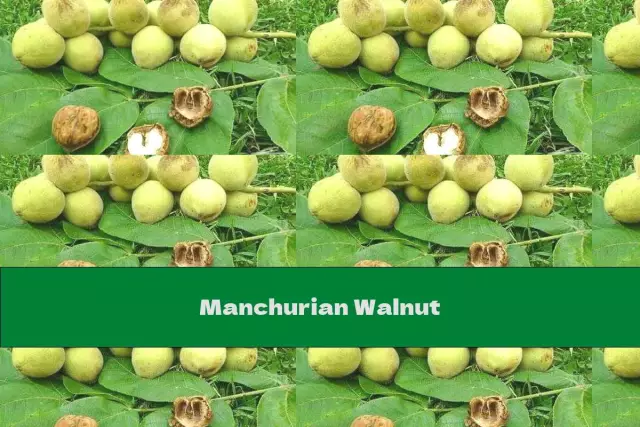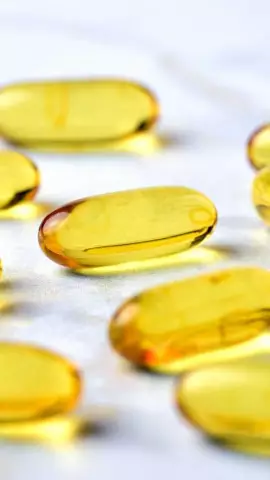- Author Rachel Wainwright [email protected].
- Public 2023-12-15 07:39.
- Last modified 2025-11-02 20:14.
Manchurian nut
Instructions for use:
- 1. Description and distribution locations
- 2. The chemical composition of Manchurian walnut
- 3. Healing properties
- 4. Application
- 5. Contraindications

Manchurian walnut (dumbey) is a deciduous monoecious tree or shrub belonging to the genus Walnut.
Description and distribution locations
The Dumbay nut is a close relative of the walnut. Under natural conditions, it grows into a tall tree, about 25-30 meters, with a spreading crown. In open places, the trunk is lower, and the crown forms a tent, expanding in breadth. In this form, the tree can become a decoration for any garden, as well as perfectly protect from sunlight and rain.
Dumbey nut grows in Primorye and Amur Region, in the west it reaches the Zep River. Prefers mixed forests, grows in river valleys and on adjacent slopes. The tree is successfully bred in Novosibirsk, Gorno-Altaysk and a number of other settlements.
The Manchurian walnut has complex odd-pinnate leaves, up to 70 cm long. They consist of 5-9 leaves and have a strong odor that repels moths.
The tree blooms in May, simultaneously with the opening of the leaves, forming on the branches short brushes up to 12 cm with female flowers, and earrings up to 15 cm long with male flowers.
The tree begins to bear fruit at 6-9 years of age. The fruit is an oval green drupe up to 5 cm long. Inside the green pulp there is a hard shell, and in it there is an oily seed - the kernel of the nut.
The chemical composition of the Manchurian nut
The properties of the Manchurian nut are due to the content of nutrients in it. Young leaves of the plant contain tannins, iodine, alkaloids and essential oil, as well as a lot of ascorbic acid (about the same as in rose hips). In the pericarp of the nut, tannins are found that contain hydrojuglons (substances that can have a beneficial effect on certain skin diseases).
The kernels contain 50% fatty oil.
Healing properties
Plant-based preparations have antispasmodic, analgesic, astringent, anthelmintic, antidiabetic, antimicrobial effects. Hydrojglons contained in green pericarp give the Manchurian nut wound healing properties and contribute to the treatment of skin diseases.
The Manchurian nut has phytoncidal properties: under the crown of the nut, the vegetation grows very poorly.
The leaves of the plant are of particular value. They have a high antimicrobial effect.
Application
The Manchurian nut has found its application in Far Eastern medicine. There, in particular, decoctions of the shell and bark and extracts from walnut leaves are used for inflammation of the oral cavity and for stomach upsets.

Baths are taken from the bark of young shoots for various skin diseases and rheumatism, and the nut bast is used as a wound-healing and pain reliever.
The use of Manchurian nuts is widespread as a fortifying, bactericidal, anti-sclerotic agent, as well as for lowering blood sugar and normalizing metabolism.
A decoction of the leaves for angina is rinsed, and the decoction is taken inside for diarrhea and internal bleeding.
Oil infusion of the plant is used as a wound healing agent. Before hard physical work, hands are rubbed with fresh walnut leaves - this prevents the formation of calluses.
Walnut kernels are very nutritious, they are eaten when the body is depleted.
Contraindications
A contraindication to the use of the Manchurian nut is individual intolerance.
Information about the drug is generalized, provided for informational purposes only and does not replace the official instructions. Self-medication is hazardous to health!






